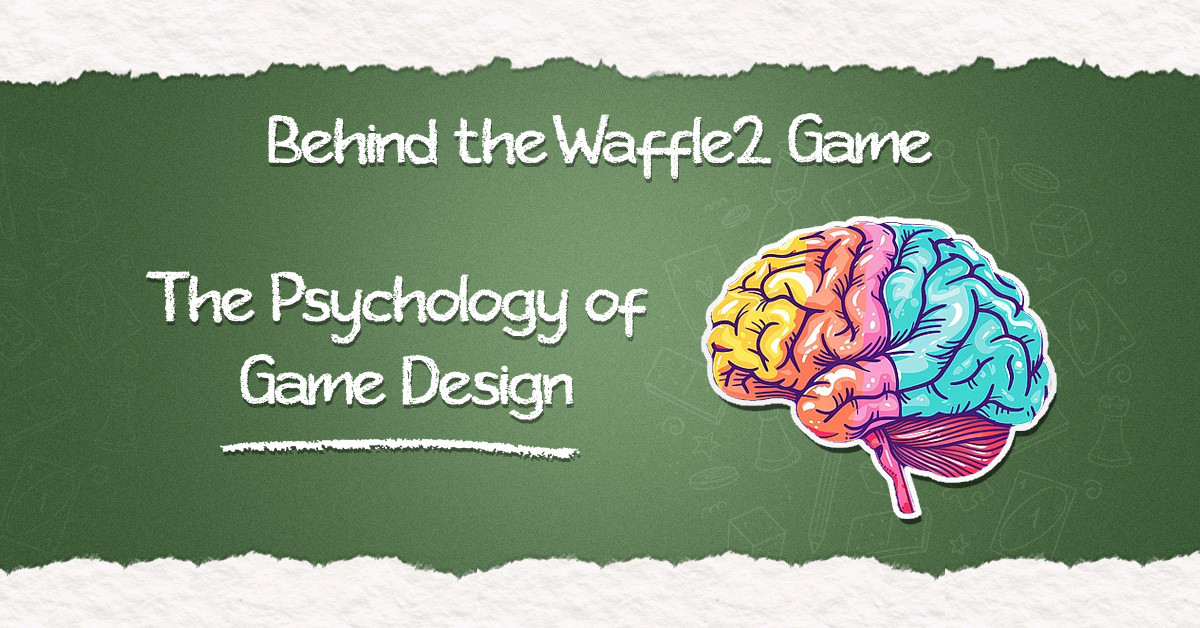Game makers/designers use psychology to target & cater to the right audience. They do this to make their game popular and capitalize on its popularity. Psychology plays an important role in game design, as it helps game designers to understand user behaviour. You may have noticed a growing trend of people playing daily word puzzle games, such as Waffle2 and Wordle.
Did you ever think about what stimulates them to play these games every day? Well, in this blog, we shed light on all such things and reveal what creates a win-win situation for creators and players. We will learn the psychology behind the word puzzle game, including the most trending Waffle2 game.
The Role of Scarcity
Scarcity increases the value; the more abundance means less value, and less availability means more demand or value. Game designers, including the designers of Waffle2, use the same psychological phenomenon to create scarcity.
If you have played the daily waffle2 game, you may have noticed that you get a limited number of moves to solve the puzzle. You try to save as many moves as possible to earn 5 stars (Note: In the waffle2 game, you earn 1 Star against each move left.)
This scarcity of moves creates a psychological effect on players that makes the game challenging and more interesting. Other popular word puzzle games create such scarcity by challenging players to solve the puzzle in a limited time.
Now, you may understand the importance of employing such a psychological phenomenon to make a game challenging and engaging. Well, let’s move to the next mindboggling psychological trick.
The Reward System
When we get rewarded, our brain releases a special kind of hormone called Dopamine. Dopamine is also known as the “reward hormone”. It is a neurotransmitter that produces feelings of pleasure and satisfaction, which motivates you to repeat activities that reward you.
Taking advantage of this, game designers reward players for their performance, which gives them a sense of accomplishment. This is one of the main reasons why they return to play the game.
In Waffle2, you may have noticed that you are rewarded stars based on the total number of moves left after solving the level. You can earn a maximum of 5 stars. Moreover, you can share your stats with your friends to flaunt your achievements.
Many games use such a reward system to make players feel that they have achieved something. And in return, games see a high retention rate and a low churn rate.
The Need for Cognition
Some people love games that involve cognitive skills. Word puzzle games like Waffle2 are one such example. These games challenge your pattern recognition skills and give you tasks to form words and clear levels.
These games help train your brain, enhance your memory power, strengthen your vocabulary and verbal ability, and make your problem-solving skills better. Players who love brain challenges and problem-solving take great interest in such types of games.
Targeting such an audience, game designers create levels in a way that doesn’t make you feel overwhelmed, and at the same time, you benefit. You will notice this while playing the Waffle2 game.
These audiences/players are highly loyal and stick to a particular game or genre. This psychological phenomenon creates a win-win situation for both creators and players.
The Virality Factor
Game designers know that their games can only become viral when they have virality factors. Virality factors mean that a game is engaging, user-friendly, bug-free, and has a good, rewarding system. Other than these, the most important factor is players’ willingness to share with others.
Once the game has all these virality factors, players tend to share the game link more on social media. A surge in sharing can have compounding effects and can make the game popular and trending in a short period of time.
Keeping these factors in mind, game designers create such word puzzle games that players are willing to share and bring more users; one such example is the Waffle2 game.
The Fear of Missing Out (FOMO)
People can have a fear of missing out, and you may have heard about this earlier. Advertisers, marketers, brand promoters, and big brands use this psychological phenomenon to target desired audiences and customers. Likewise, game designers also create such situations which make players and their peers feel FOMO.
FOMO creates compulsion and increases impulsive behaviour; therefore, users hearing about viral games through their peers or on social media tend to try them.
Moreover, game designers also employ FOMO in other aspects of game design, like limited-period offers, exclusive invitations, special events, etc. Such campaigns or game design increase the game’s popularity and user base.
Also read- How Word Games Are Shaping the Future of Casual Gaming
Conclusion
Understanding users’ psychology and employing various psychological phenomena has been done for years to target the right audience, increase the popularity of the game, improve user retention and capitalizing on the popularity of the game.
Game designers do deep research to understand their user base and employ the required psychological phenomena to produce the best games and earn more. Waffle2 game is one such example that understands user psychology and employs ethical psychological phenomena to provide the best game experience.
Whether it is about creating scarcity in the game or FOMO, game designers very sagaciously choose to understand and employ these factors, and all this makes a game popular and loved by users all over the world.
Similar blog- The Success Story Behind Waffle Unlimited
